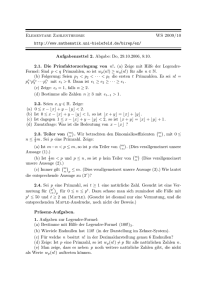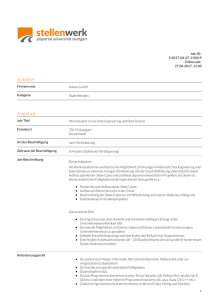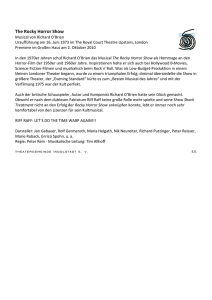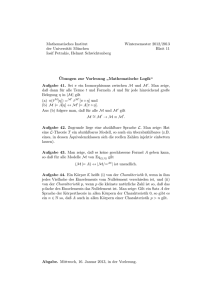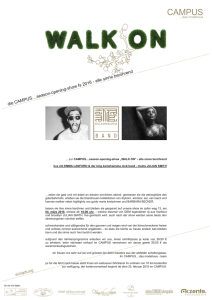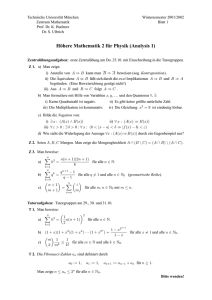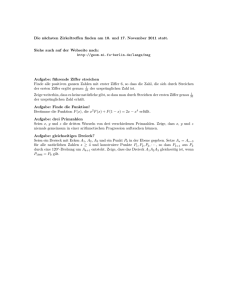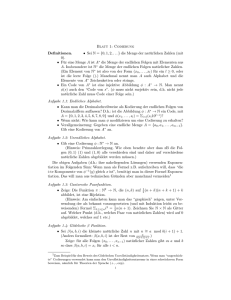pdf-File
Werbung
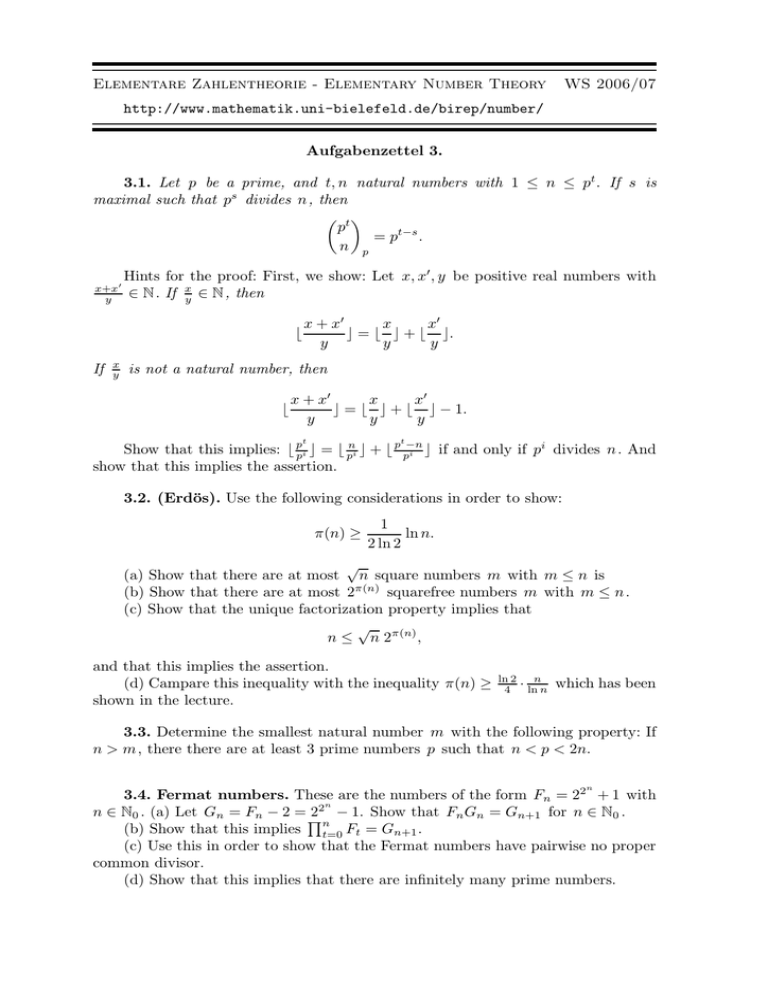
Elementare Zahlentheorie - Elementary Number Theory WS 2006/07 http://www.mathematik.uni-bielefeld.de/birep/number/ Aufgabenzettel 3. 3.1. Let p be a prime, and t, n natural numbers with 1 ≤ n ≤ pt . If s is maximal such that ps divides n , then t p = pt−s . n p x+x′ y Hints for the proof: First, we show: Let x, x′ , y be positive real numbers with ∈ N . If xy ∈ N , then ⌊ If x y x + x′ x x′ ⌋ = ⌊ ⌋ + ⌊ ⌋. y y y is not a natural number, then ⌊ x + x′ x x′ ⌋ = ⌊ ⌋ + ⌊ ⌋ − 1. y y y t t i divides n . And Show that this implies: ⌊ ppi ⌋ = ⌊ pni ⌋ + ⌊ p p−n i ⌋ if and only if p show that this implies the assertion. 3.2. (Erdös). Use the following considerations in order to show: π(n) ≥ 1 ln n. 2 ln 2 √ (a) Show that there are at most n square numbers m with m ≤ n is (b) Show that there are at most 2π(n) squarefree numbers m with m ≤ n . (c) Show that the unique factorization property implies that √ n ≤ n 2π(n) , and that this implies the assertion. (d) Campare this inequality with the inequality π(n) ≥ shown in the lecture. ln 2 4 · lnnn which has been 3.3. Determine the smallest natural number m with the following property: If n > m, there there are at least 3 prime numbers p such that n < p < 2n. n 3.4. Fermat numbers. These are the numbers of the form Fn = 22 + 1 with n n ∈ N0 . (a) Let Gn = Fn − 2 = Q 22 − 1. Show that Fn Gn = Gn+1 for n ∈ N0 . n (b) Show that this implies t=0 Ft = Gn+1 . (c) Use this in order to show that the Fermat numbers have pairwise no proper common divisor. (d) Show that this implies that there are infinitely many prime numbers. 3.1. Die Aufgabe 2.4 legt folgende Vermutung nahe: Sei p Primzahl, seien t, n natürliche Zahlen mit 1 ≤ n ≤ pt . Ist s maximal, sodass ps Teiler von n ist, so gilt t p = pt−s . n p ′ x+x y Beweis der Vermutung: Zeige zuerst: Seien x, x′ , y positive reele Zahlen mit ∈ N . Ist auch xy ∈ N , so ist x x′ x + x′ ⌋ = ⌊ ⌋ + ⌊ ⌋. ⌊ y y y Ist dagegen x y keine natürliche Zahl, so ist ⌊ t x + x′ x x′ ⌋ = ⌊ ⌋ + ⌊ ⌋ − 1. y y y t i Folgere: ⌊ ppi ⌋ = ⌊ pni ⌋+⌊ p p−n i ⌋ genau dann, wenn p ein Teiler von n ist. Folgere daraus die Behauptung. 3.2. (Erdös). Zeige mit Hilfe der folgenden Überlegungen: π(n) ≥ 1 ln n. 2 ln 2 (wieder ein Beweis, dass es unendlich viele Primzahlen gibt...) √ (a) Zeige: Die Anzahl der Quadratzahlen m mit m ≤ n ist höchstens n. (b) Die Anzahl der quadratfreien Zahlen m mit m ≤ n ist höchstens 2π(n) . (c) Folgere aus der eindeutigen Primfaktorzerlegung, dass demnach gilt: n≤ √ n 2π(n) , und zeige damit die Behauptung. (d) Vergleiche diese Abschätzung mit der Abschätzung π(n) ≥ der Vorlesung gezeigt wurde. ln 2 4 · n , ln n die in 3.3. Bestimme die kleinste natürliche Zahl m mit folgender Eigenschaft: Ist n > m, so gibt es mindestens drei Primzahlen p mit n < p < 2n. n 3.4. Fermat-Zahlen. Die Zahlen der Form Fn = 22 + 1 mit n ∈ N0 nennt man Fermat-Zahlen. n (a) Setze Gn =Q Fn − 2 = 22 − 1. Zeige: Fn Gn = Gn+1 für n ∈ N0 . n (b) Folgerung: t=0 Ft = Gn+1 . (c) Folgerung: Die Fermat-Zahlen sind paarweise teilerfremd. (d) Folgere daraus: Es gibt unendliche viele Primzahlen.
